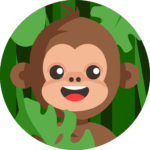Many people believe that cows only have four teats; however, approximately 50% of cows have one or more extra teats. Most accessory teats have a slightly different structure compared to regular teats. They are usually smaller and located at the back of the udder.
Deer, cattle, and goats all have cloven hooves, among other mammals, and animals with cloven hooves are generally found in the order Artiodactyla. In biology, cloven hooves can help to distinguish an animal, and they are also considered important for religious reasons because some religions involve cloven hooves in their dietary restrictions.
Why do cows stick together?
Cows are herd animals and stick together to reduce the threat from predators. It makes sense for them all to graze in the same direction, so the herd stays together as it drifts around the field or across the savannah.
Why do cows all face the same way?
Science has yet to identify the cause of this unique behavior, but the German scientists have come up with a theory. Wind and Light. The observations showed that wind and light do not play a role in the cows’ eating and resting behavior.
This begs the inquiry “Why do cows in a field face the same direction?”
Cows tend to stand and graze around a field facing the same way as each other to avoid threats to, and within, the herd. Cows are herd animals and stick together to reduce the threat from predators.
The images showed that cows in lower magnetic-north fields still faced the same way as cows in stronger magnetic-north fields. The magnetic strength differences, according to researchers, showed that even if the magnetic field was low, the cows continued to face in the same direction.
The Earth’s magnetic field might have something to do with this baaaa-rmy behaviour. Sheep tend to stand with their backs to the wind when it is cold, but even on sunny days, cows, sheep and even deer all tend to face in the same direction.
Do cows have bottom teeth?
Yes, cows have teeth! Cows have sharp teeth on the bottom of their mouths (called incisors) for cutting grass and other foliage, and large grinding teeth called molars at the back of their mouths on the upper and lower part of their jaws. Cows have upper teeth at the back of their mouth only.
